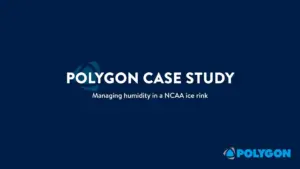Selecting the Right Roofing Fasteners
Types of Commercial Roofs and the Fasteners to Use
The roof deck is quite literally the base upon which the strength and structural integrity of a roofing system rests. When considering the requirements for a commercial roof, choosing the right material is essential. There are a variety of materials available, each with their own advantages. However, the roofing material is only one consideration in creating a sound system—the type of fastener used to secure the roofing materials to the deck is just as important. There is a wide array of roofing fasteners from which to choose—some are constructed for versatile usage, while others are made for specific types of decks. Finally, to ensure the components work together without compromising structural reliability and deliver a superior roof that will last for many years, the entire system should be designed and installed by a licensed professional.
Choosing the Right Material for Your Roof Deck
A roof deck needs to do more than just keep the rain out. Depending on the type chosen, it may also contribute to the thermal performance of a facility, increase fire resistance, provide slope for drainage, and enhance wind-uplift performance. It must also accommodate building movement, and the material used may also determine the attachment method of the vapor retarder, insulation, and membrane. In the US today, the most common roof decks installed are wood, metal, and concrete—typically chosen not only for the desired characteristics of the respective material, but also on what is readily available in a given region of the country. On the West Coast, for example, wood decks tend to dominate, whereas east of the Rockies, metal roofs are favored. Less common roof deck types include gypsum or sheetrock, Tectum (cementitious wood fiber acoustical panels), and Insulrock (pre-manufactured concrete).
Within each broad category of decks, there are a number of different options. With wood, for example, there is tongue-and-groove wood planking, plywood, OSB (oriented strand board), and shiplap. Concrete decks are available in different PSIs—typically from 2000 to 5000 PSI, which would be equivalent to the solidity of runway or freeway concrete. Metal decks are measured in gauges, with 28, 26, 24, 22, 20, 18, and 16 gauge steel the most common thicknesses. When considering deck thickness, the metal’s yield strength and ultimate tensile strength—measured in kilopounds per square inch (KSI), with one KSI equal to 1,000 pounds per square inch—is also a critical consideration. 22-gauge steel, for example, is available in KSI ratings such as 33, 80, and 102. Further, corrugated metal sheets are available in different profiles and shapes with designations such as Type B, Type F, or Type N, which add rigidity and strength.
Identifying an Existing Deck Type
Before choosing the right type of fastener to use for an existing roof, the deck type must be determined. If the deck is relatively new and not comprised of multiple layers, this may be as simple as looking at the roof’s underside. Otherwise, dependent upon how large a sample is needed and the roof’s layer depth, there are several methods of obtaining a core sample, each with their own pros and cons. For example, a CRREL cutter saws an easily patched 2” diameter hole in the roof—the core is then pushed out of the pipe so that the components can be examined. Other approaches include cutting out a small section of the roof using a knife, insulation saw, or reciprocating saw. Once the core sample has been taken, it can be analyzed to determine:
• How many layers are in place
• How the layers were applied
• The material type, manufacturer, thickness, and condition of each layer
• If there is any evidence of water that has become trapped in the roofing material
• Whether hazardous materials, such as asbestos, are present.
Local building codes should also be checked to ensure the current roof and any projected repairs will be up to standards. For example, if you have more than two roof system layers, a complete removal down to the roof deck is usually required.
Different Fasteners are Appropriate for Different Materials
Once the deck type has been established, it’s now time to identify the correct fastener to use. Fasteners come with a pullout rating; however, the condition of the roof can alter this value, i.e., water damaged plywood can lower the actual pullout value from the manufacturer’s recommended rating. Third party testing using the ANSI/SPRI FX-1 Standard Field Test Procedure for Determining the Withdrawal Resistance of Roofing Fasteners can determine the optimal fasteners, based on pullout values. If the tested pullout values differ from those provided in the manufacturer’s charts, use the adjusted value instead.

Largely replacing the traditionally used #12 fastener, one of the most common fasteners is the #14 HD (heavy duty). The #14 HD fastener is versatile and engineered to secure insulation, coverboards, base sheets, and single-ply roof membrane systems to corrugated steel ranging from 16 to 22 gauge, as well as wood, and concrete substrates. It has a #3 Phillips head and features a #2 double flute self-drilling point with an exclusive tapered entry thread designed to pierce steel quickly and offer exceptional back-out resistance.
Further, there is a fastener for virtually any roof depth. A #14 fastener, for example, is available in lengths ranging from 1-1/4” to 24” long. However, the threads of a fastener typically do not extend more than 4’’ up from the bottom. That means if a fastener is too long, its threads may not engage with the roof deck at all. That’s an issue, since most all manufacturers require a minimum of 1’’ penetration into the deck to ensure sufficient attachment. Thus, it’s essential to ensure the correct fastener length for the specific roof deck depth. Featuring larger shank sizes, other common fasteners include the #15 and #21—but it’s important to note that a larger fastener doesn’t necessarily correspond to a higher pullout value since it also makes a bigger hole and removes more material.

Specialized solutions are also available to address specific needs. Although a #14 fastener can be used on a concrete roof, fluted nails are often used, as well as concrete spikes or split drive anchors whose tips sprawl out when they’re tightened. Peel rivets may be used in decks that are lightweight or have been damaged, or in rockwall insulation over a metal deck. A peel rivet is inserted into a pre-drilled hole; then, a setting tool is used to pull the rivet up, forcing the bottom to peel and curl while holding it securely in place. Finally, there are specialized expansion fasteners for gypsum decks, such as TL fasteners made from plastic, which may also feature a wire at the bottom to prevent turning so they can’t be removed.
Don’t Know What to Pick? Turn to the Experts
With the slew of variables and options to deal with, choosing the correct fastener can be confusing at best. That makes it significantly more challenging for the trades that know little to nothing about roofing itself. With a quick phone call, not only can Anchor Products suggest the best U-Anchor for your application, but we can guide you to the best fastener option—and we can even supply the fasteners and additional accessories with your order. To make your next project a success, reach out to Anchor Products today and experience what makes us the industry’s choice for rooftop attachments.
To find out more, visit www.anchorp.com/u-anchors/








